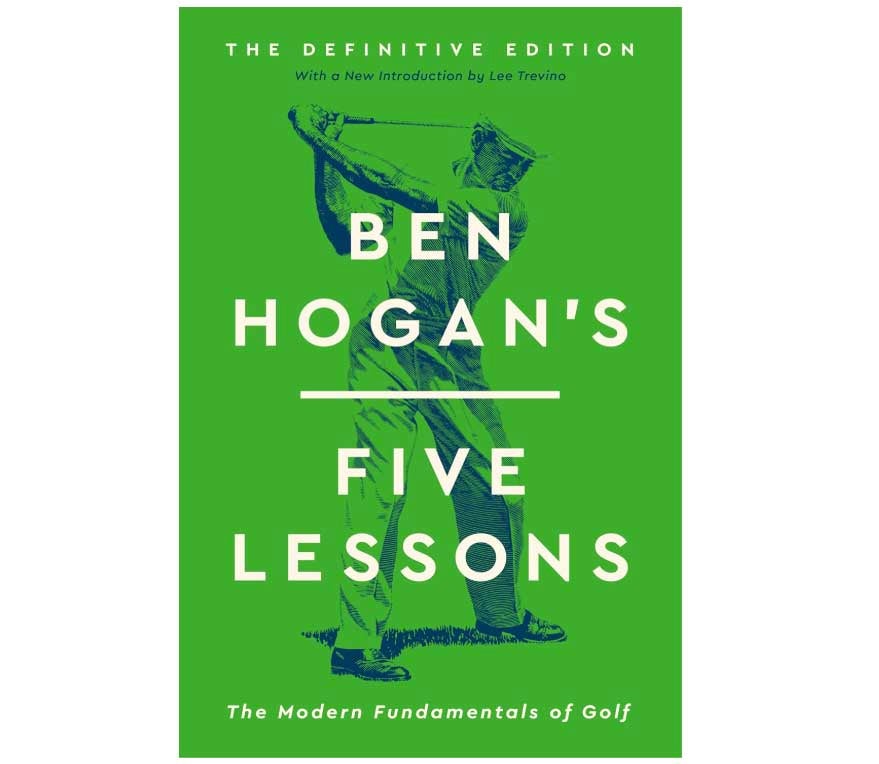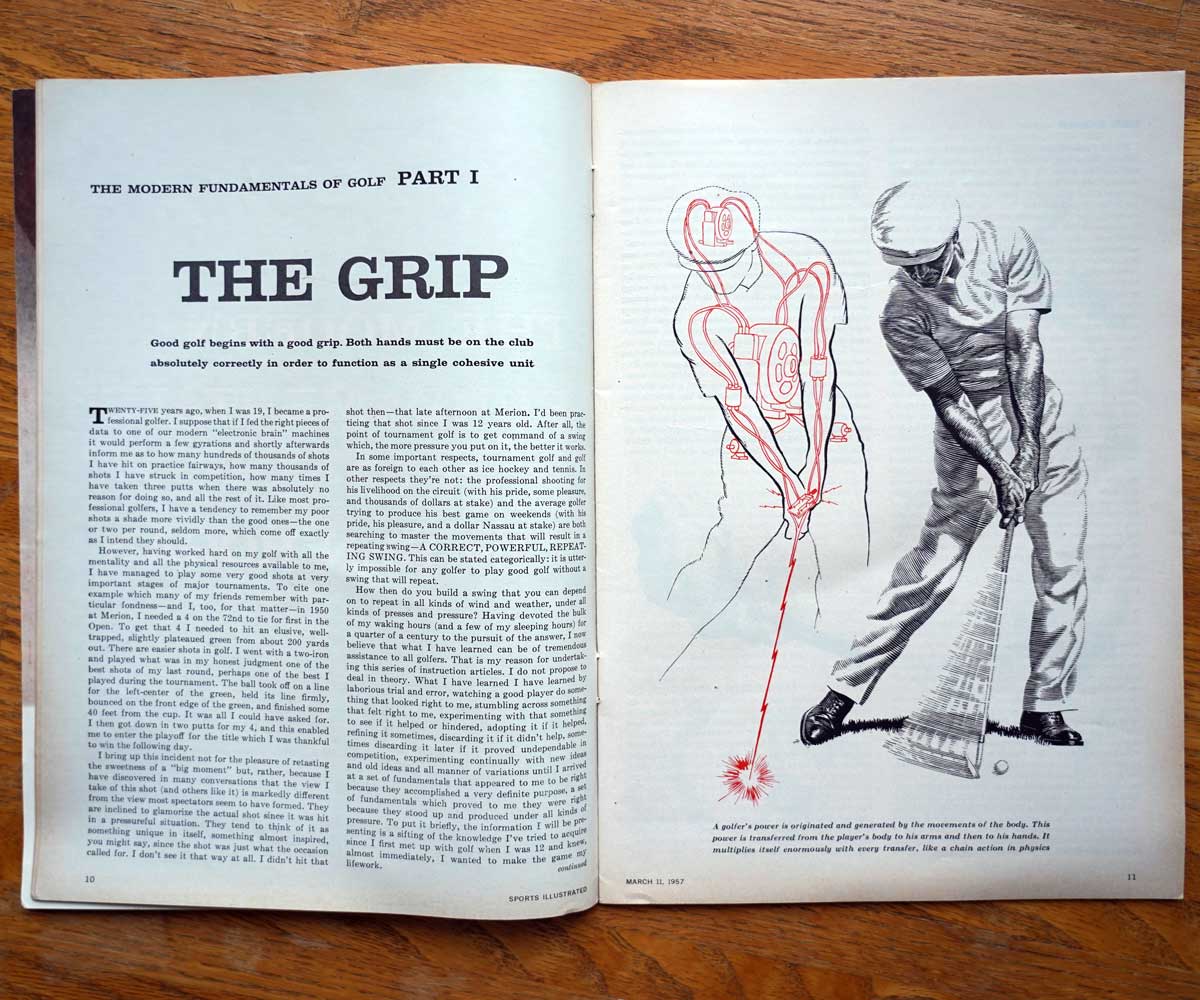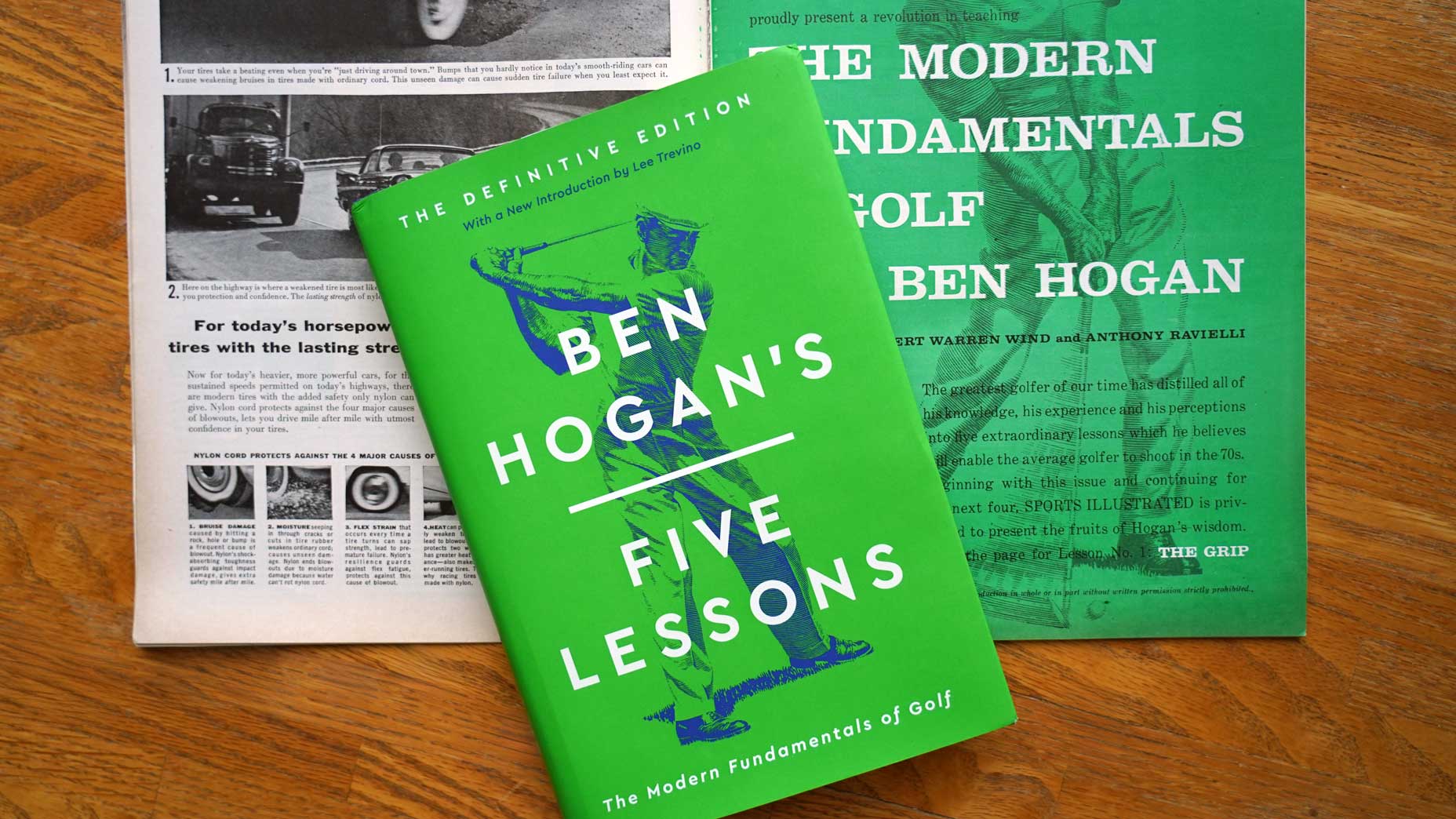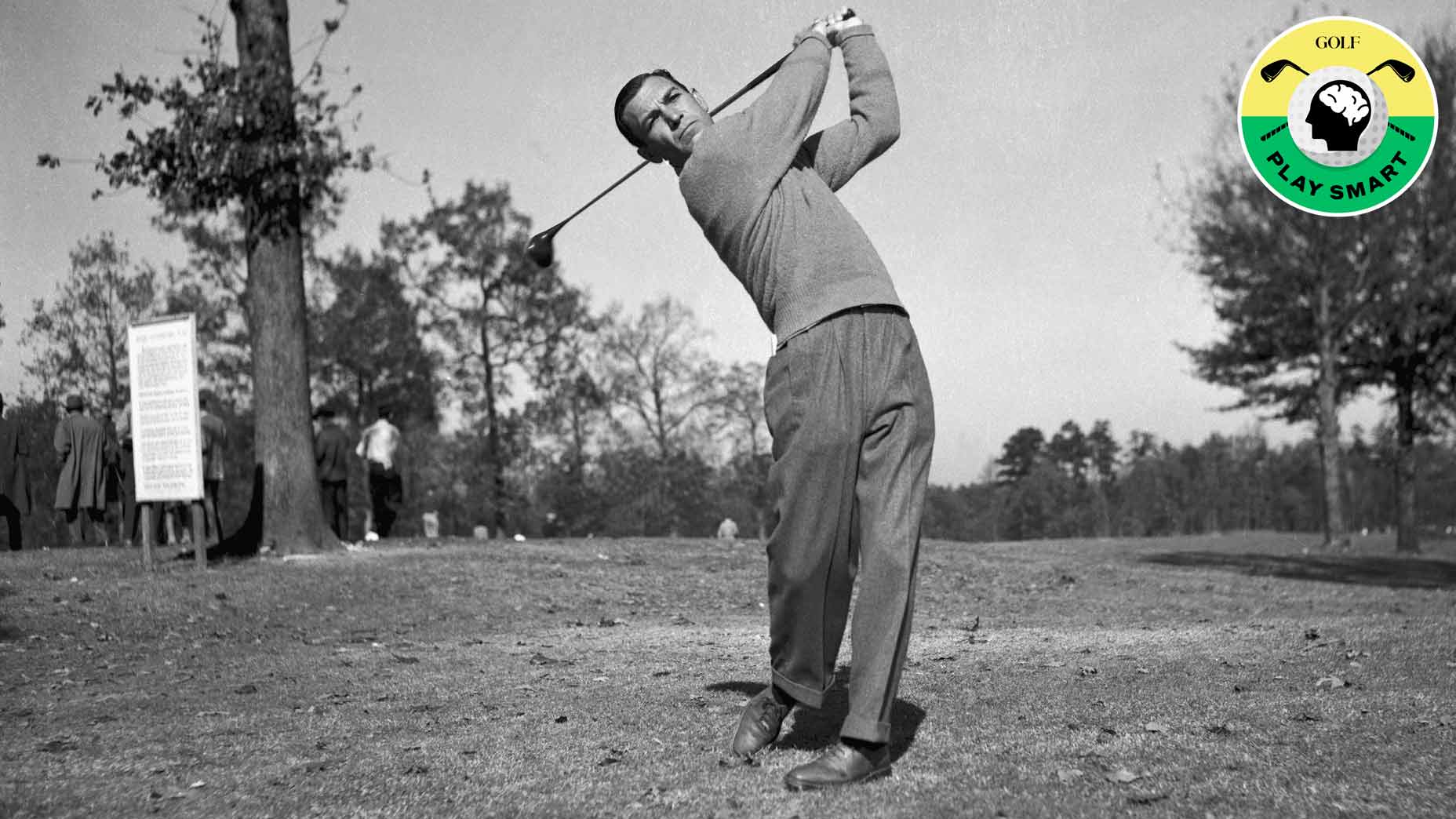When it comes to golf books, publishers believe in two absolutes. First, golf literature generally sells better than lit about other sports. The endless game is so relatable that it’s quite readable, too.
Second, golf books are routinely published only a few times a year: April, around the Masters; mid-June, to align with Father’s Day and the height of the golf season; and during the holidays, when the perfect stocking stuffers are a sleeve of balls and a $19 paperback.
Perusing the top golf books on Amazon, though, might leave you puzzled. The best-selling golf book today is the same bestseller from three months ago. And three years ago. And, yes, even three decades ago. It’s “Ben Hogan’s Five Lessons,” first printed in Sports Illustrated in 1957.
Not only does the hard copy edition consistently rank among the top 5 golf books — often at no. 1 — but the Kindle version often also sits inside the top 25. Last weekend the audio book checked in at No. 58. Most titles yearn for just one of its editions to steadily stream inside the top 100. Hogan’s wisdom — as told to legendary golf writer Herb Wind and illustrated on scratchboard by Anthony Ravielli — continues to be widely consumed in every medium. If the Rules of Golf are this sport’s 10 Commandments, then this book is the closest thing it has to a Bible.
A common question accompanies that idea: Should it be?
That depends on who you ask. After all, many a 12-handicap has drowned in the complex differences Hogan details between supination and pronation. A better question then is how has the book endured over time? Seemingly every elite professional of the 20th century had an instruction book, or several, in their name. Watson, Nicklaus, Trevino, Palmer, Snead. How and why did Hogan’s separate itself?
John Garrity had a better view than anyone. Before a lengthy career on the golf beat at Sports Illustrated, Garrity was an associate editor at Simon and Schuster in the early 1970s, where as-told-to instruction books were nearly always given the green light. The books didn’t cost much and didn’t earn much, Garrity says, but they also never lost money. They all seemed to sell around the same number of copies — 12,000 — no matter who graced the cover. “There’s only been a couple exceptions to that,” Garrity said. “Ben Hogan’s ‘Five Lesson’ is one that sold more.”
Way more.
Estimates from industry experts — the manuscript has been licensed to dozens of publishers over the years — peg the number of copies sold at more than a million. And counting. This week, Simon and Schuster published a 40th anniversary edition of the book, leaving the original text untouched but teeing it up with a new foreword from Lee Trevino and adding 97 new pages of “History, Context, Legacy.” The new and improved “Five Lessons” is bound in a flashy, electric green cover, a nod to the palate of the original magazine layout. SI published those five lessons in installments, in five consecutive issues, during the magazine’s infancy in 1957.

Ben Hogan’s Five Lessons
Simon and Schuster editor Jofie Ferrari-Adler worked with longtime golf writers Michael Bamberger (a GOLF.com contributor) and Jaime Diaz to bring new life to Hogan, Wind and Ravielli’s work. What they created is like a literary museum exhibit. The 67-year-old artifact is the main event, but it’s now paired with much rich context about the men who crafted it. There are game stories from the ‘50s, columns from the ‘90s, even an interview between Hogan and Ken Venturi from a 1980s CBS broadcast. The new edition is an ode to Hogan, of course, but also to one of the game’s greatest writers in Wind; the book includes some of Wind’s greatest hits, compiled by the next generation of writers.
But none of that explains why the book remains so popular — or became so popular to begin with — particularly with the advent of digital golf instruction, much of which can be personalized and disseminated through the big-screen in your living room and the 6-inch screen in your pocket.
Like any old recipe, “Five Lessons'” staying power is fueled by its ingredients. You had the best ball-striker of his generation combined with the best wordsmith of his. (Ravielli, the illustrator, was no third wheel.) The compilation took 10 months to complete, but landed in a booming period for recreational golf. Soon after SI published the lessons, the magazine’s editor wrote that Hogan’s musings had been so popular that readers were ripping pages out of SI copies at the Yale Club and golfers in the snowy Northeast couldn’t resist immediately taking to the practice range.


Perhaps the best modern comp to Lessons’ success is ESPN’s The Last Dance documentary, which revealed many of Michael Jordan’s thoughts on basketball and his career for the first time — and at the perfect time, when the world was sheltering at the height of the Covid-19 pandemic. We were all at home and starved for new content, and Jordan, like Hogan, was more forthcoming than ever before. Hogan, like Jordan, was long believed to possess something special, but rarely discussed his talents publicly.
“I think it really is the mystique that sells the book,” Jaime Diaz said, ”because Hogan was just such an incredible genius and so inward and and reticent to ever talk about anything that when he finally did, it was like, Oh my God, the vault is open finally.”
The tips themselves are dense. Nineteen pages devoted just to gripping the club. Twenty-five on setting up to the ball. The writing is authoritative, bordering on lecturing, with the occasional all-caps clause and plenty of italics emphasizing what the golfing genius needs you to focus on. The end goal, in Hogan’s mind, was getting bogey golfers to break 80 consistently. But the ultimate ideology of the book is rather simple: never hit it left.
“It’s an anti-hook book,” Diaz said. “I mean, really weak grip and just making sure the club never turns over. It’s a Tour player’s swing. But even Tour players can’t always replicate it.”
Therein lies a truism of the game. No singular set of lessons can solve the golf riddle for the unlimited number of body types and abilities we see on a driving range, even a PGA Tour driving range. (As Arnold Palmer preached, swing your swing!) That idea, all these years later, is reiterated way up front, in Trevino’s foreword. Over the first five pages, Trevino winds back the clock to 1957, when he stumbled upon the magazine while on a Marines troop ship headed to Japan.
Even Trevino admits he “might not have understood everything Mr. Hogan and Mr. Wind wrote, but their words furthered my golfing education.” Trevino joined the Marines golf team abroad and played more than ever. After his discharge, he practiced on his own with two golf balls — one was his score, the other was Hogan’s. A couple of years later, Trevino visited Hogan’s club, Shady Oaks, in Dallas; he was transfixed by Hogan’s body movement, memorizing how Hogan’s hips led his action. As Trevino writes, “That’s when I started to get good.”
For Trevino, Hogan was both inspiration and imagination. And isn’t that how golf feels to all of us? If we are in search of any one thing in this game, it’s some sort of feel, cooked up in our imagination or inspired by something. Or someone. Trevino’s ball flight became a fade, like Hogan’s, but looked nothing like Hogan’s fade. Trevino had taken “The Modern Fundamentals” and made them his own.





